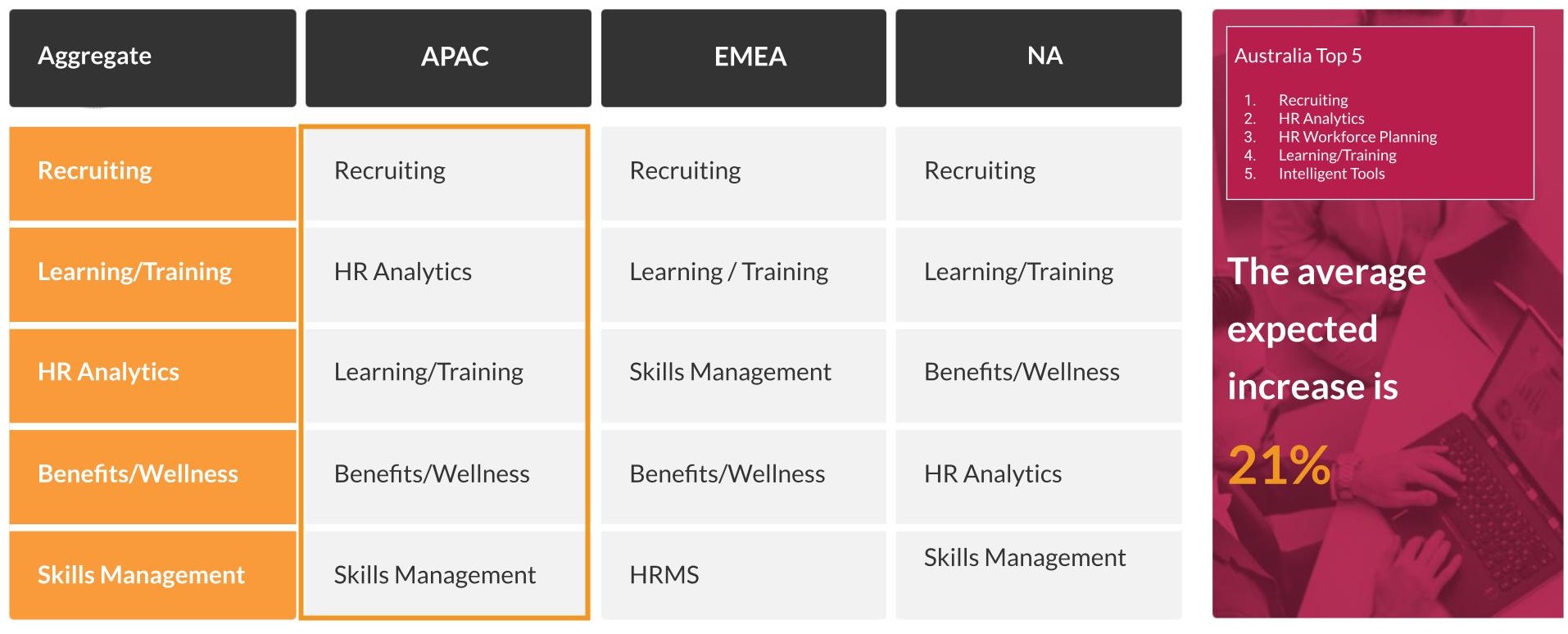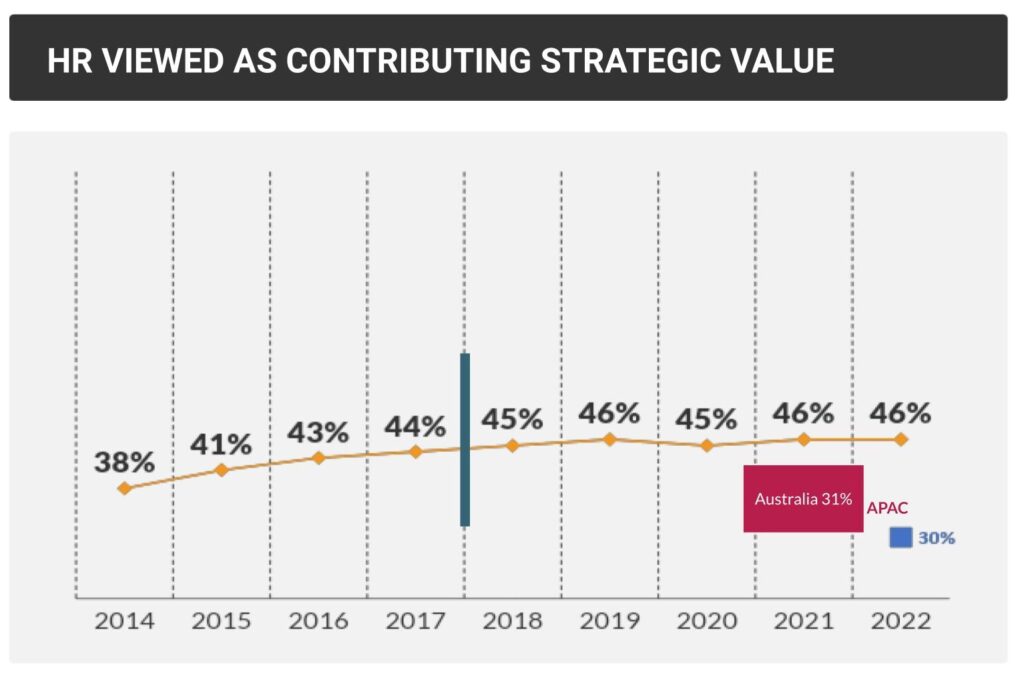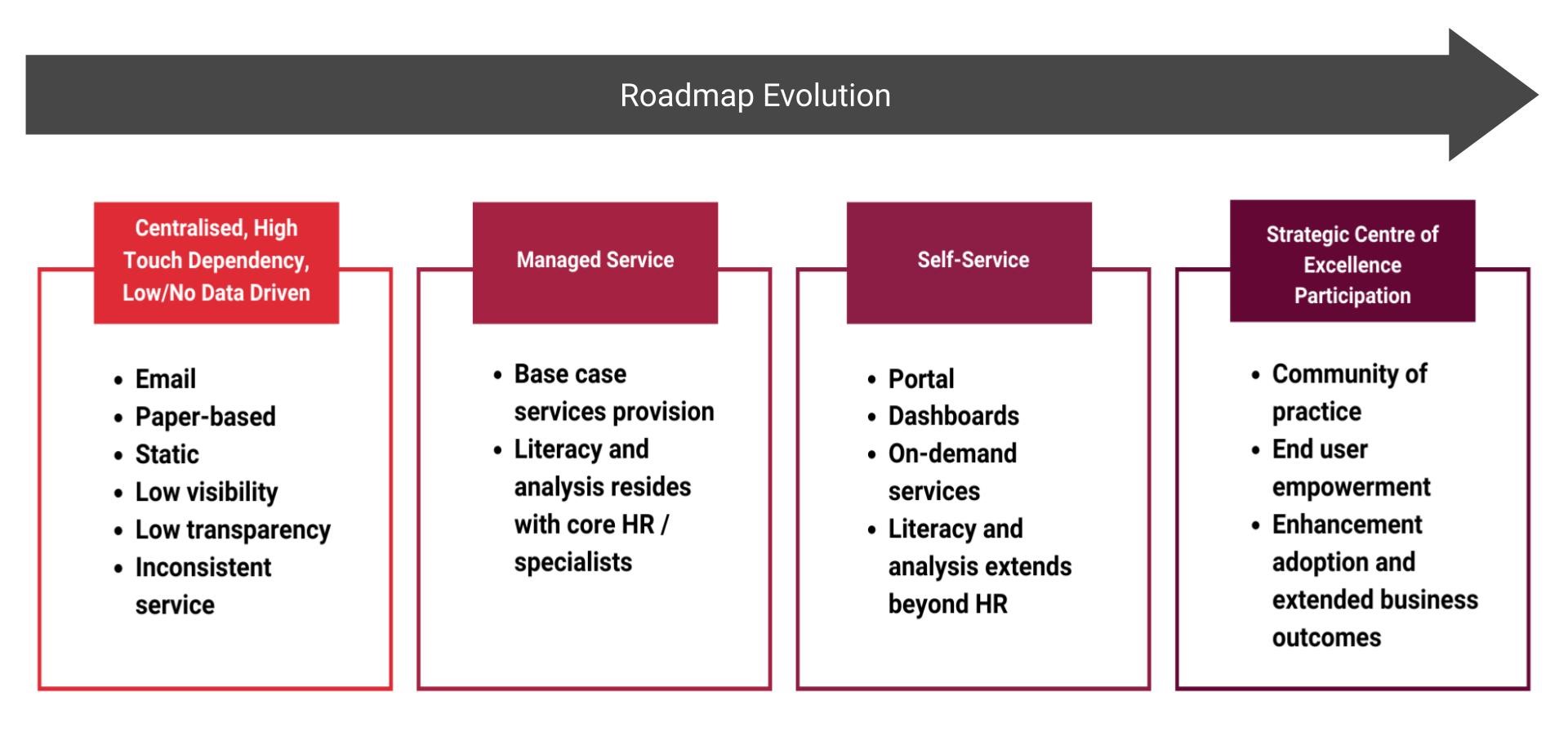In the rapidly evolving landscape of HR tech, organisations are constantly seeking out ways to optimise their HR systems and strategies.
This article includes key findings from the 2022 HR Systems Survey and how they can help with your HR technology roadmap. Learn current trends and valuable insights, including:
1. Top 3 emerging HR investment areas in the APAC
2. HR shifting towards becoming a strategic partner
3. Signals that it’s time to replace your HR software
In addition to this, we’ve created an HR technology roadmap model that will help you to better understand where you stand and how you can get to the next level.
So, let’s jump into the key findings:
Top 3 emerging HR investment areas in the APAC
Every year, Sapient Insight Group conducts research to determine if their spending will increase, decrease, or stay the same for the next year. Even with everything that happened in 2020, spending plans have remained relatively consistent over the last two years, and they continue to rise.
However, as we approach 2023 and the economy begins to slow down, we expect investments will shift from engagement-focused applications to solutions that automate more work, replace risky on-premise solutions, and address any system that limited organisation’s ability to fill critical roles in the past.
According to the survey respondents, the top three HR Technology categories they plan to increase spending on in 2023 are:
• Recruitment
• Learning
• Analytics
It’s also interesting to note that Recruiting topped the list in all regions and size categories than pre-pandemic spending plans.
One stand out from the Australian data was the plan to increase spending in HR Workforce Planning. It appears that organisations in our region are very focused on tools that help them understand their workforce to help drive more informed decisions.
 Source: 25th Annual HR Tech Survey by Sapient Insights
Source: 25th Annual HR Tech Survey by Sapient Insights
HR shifting towards becoming a strategic partner
The report also examined the question of whether HR is perceived as contributing strategic value within organisations. Unfortunately, the percentage of organisations seeing HR as a strategic function has remained stagnant at 46% since 2017 (see image below).
In comparison, other staff functions such as Finance and Supply Chain are regarded as contributors of strategic value by their organisations at rates of 67% and 60% respectively. This factor holds great importance as it significantly influences the reception of HR initiatives by the business and the value executives place on HR recommendations.
 Source: 25th Annual HR Tech Survey by Sapient Insights
Source: 25th Annual HR Tech Survey by Sapient Insights
To gain a better understanding of this issue, the report analysed organisations that perceived HR as contributing strategic value to identify what sets them apart. These were the top 5 positive correlations that were found:
- Adaptive change management processes
- Workforce planning that includes business data & position management
- Time management system that always meets business needs
- Transformational process:
- Absence management
- Leave management
- Skills management
One area with a significant correlation and potential to impact HR as a strategic function is Adaptive Change Management. Businesses are facing constant changes and the success of these changes relies on how quickly people in the organisation can respond and adapt to it.
HR is in a unique position to take the lead in managing these changes. With all the data available in survey tools, and HRIS / payroll system, HR can quickly assess the stakeholders for any change effort. This is where HR can step up, make a difference, and become a crucial partner in driving the success of organisational initiatives.
So, is it important for an organisation to perceive its HR function as strategic? Undoubtedly, it is! Building a strategic HR function requires significant investments in resources, technology, and time. When considering the talent, HR, and business outcomes, organisations with strategic HR functions consistently achieve higher outcomes.
Even more compelling is the fact that organisations where HR is viewed as a strategic business partner experience an 11% increase in overall outcomes, compared to a mere 2% increase for organisations with average HR functions.

Source: 25th Annual HR Tech Survey by Sapient Insights
Signals that it’s time to replace your HR software
So, how do you know that it’s time to replace your HR software? Here are some signals that you should look out for:
- Mission critical processes are being completed manually
- Integrations constantly break or need upgrading
- Help desk calls are increasing versus going down
- Business leaders don’t have easy access to the data / reports they need to make decisions
HR technology roadmap maturity model
This model here allows you to identify which stage of your HR technology roadmap maturity you’re in and what you need to do to become a centre of excellence:

Still looking for more?
Watch our webinar featuring Sapient Insight Group’s Chief Research Officer, Stacey Harris and our in-house workforce specialist, Ethel Nugent, who will take you through the detail on this subject, as well as more insights from the 25th HR Systems Survey.
By clicking submit, you agree to Navigo’s Privacy Policy



